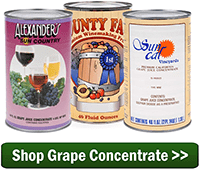 Dear Kraus,
Dear Kraus,
I would like to order Alexander’s Sun Country concentrate and blend two of the [ALC106] Zinfandel and one of the [ALC108] Barbera. I have done this with actual grapes but never with concentrate and would like to have your opinion. Using grapes the resulting wine has been rated as equal to a $40.00 bottle.
I know that I can’t have any type of guarantee as to the results, I just want to know if the 2 concentrates can be mixed and the follow the regular homemade wine instructions. I don’t want to order everything needed if you do not recommend mixing them.
Thank you,
Jerry C.
———-
Dear Jerry,
Yes, you can mix the two different wine concentrates together and then follow the homemade wine instructions for the 3 can recipe that is on our website. There will be no difference in the wine brewing process.
Having said this, one of the wine making tips you may want to consider is to make the two different wine concentrates separately, and then blend them together to taste before bottling.
This is how commercial wineries accomplish various combinations of grapes. Blending in this way gives you ultimate control of the final flavor of the wine. You can vary the ratio of the two as you see fit.
Best Wishes,
Customer Service at E. C. Kraus
———————————————————————————————————
Ed Kraus is a 3rd generation home brewer/winemaker and has been an owner of E. C. Kraus since 1999. He has been helping individuals make better wine and beer for over 25 years.
Will Your Grape Destemmer Crush My Small Grapes?
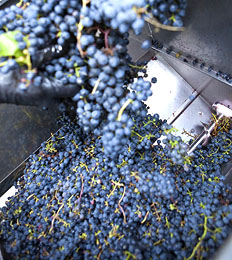 Hi,
Hi,
I have a question I hope you can help me with. It’s about the grape destemmer on your website. I would like to know if the crusher rollers on this destemmer are adjustable. I have very small grapes and need to be able to crush and destem them. They are foch grapes and this is their forth year. This is my first year for a full crop.
Thanks for your help.
Rusty C.
———-
Dear Rusty C.
While the crusher rollers on the crusher/grape destemmer are not adjustable, they are optimally set by the manufacturer. They will crush smaller grapes such as the Marechal Foch you have or Cabernet Franc among others. Grapes that are even as small as a dime are not an issue with this grape destemmer. It will also crush larger grapes such as Concord equally as well.
The picture on the right is a bottom view of the rollers and their spacing. As you can see they are very close together. The picture also shows the fluted ridges that are on each crusher roller. This makes it easy for the grapes to be grabbed by the rollers and crushed.
I hope this information helped you out. If you have any other questions please ask.
Best Wishes
Customer Service at E. C. Kraus
———————————————————————————————————
Ed Kraus is a 3rd generation home brewer/winemaker and has been an owner of E. C. Kraus since 1999. He has been helping individuals make better wine and beer for over 25 years.
My Rubber Stopper Won’t Stay In My Glass Carboy
 Dear Adventures in Homebrewing,
Dear Adventures in Homebrewing,
I hope you can help me out. I am having a problem with my 5 gallon glass carboy fermenter. I started a wine from raspberries a few days ago in my bucket fermenter. Now its time to put the wine in the carboy but the rubber stopper will not stay in the opening. It keeps coming out/coming loose. I ordered the size your company suggest. Any ideas?
Seth A.
———-
Dear Seth,
This issue can arise if there is moisture on either the stopper or your 5 gallon glass carboy. Both the side wall of the stopper and the inside of the carboy’s opening is very smooth. This smoothness is what allows the stopper to seal the carboy air-tight, but just a little bit of moisture can cause slippage, allowing the stopper to back out of the opening. This is what you are experiencing.
My suggestion is to get a paper towel and dry the stopper off completely. Then dry the inside of the carboy’s opening. Once you eliminate the moisture in these two areas, you should be able to obtain a permanent, snug fit.
If this does not solve you problem, you can try going to the next size smaller stopper, but this should not be necessary. You can also use a wire to strap down the rubber stopper. Just wrap the wire around the neck of the carboy then across the top of the stopper. Bailing wire seems to work the best for this.
I hope this helps you out.
Best Wishes,
Customer Service at E. C. Kraus
———————————————————————————————————
Ed Kraus is a 3rd generation home brewer/winemaker and has been an owner of E. C. Kraus since 1999. He has been helping individuals make better wine and beer for over 25 years.
Will My Wine Turn To Vinegar By Racking It?
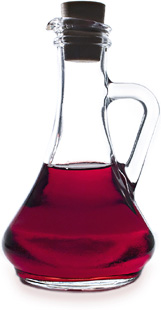 Hi,
Hi,
I have been reading that oxygen turns my wine into vinegar, so when I rack my wine doesn’t the oxygen that goes in to the fermenter hurt my wine?
Thanks Felipe
———-
[Beginner Note: Racking means to transfer a wine or must from one container to the next so as to leave any sediment behind.]
Dear Felipe,
There are two things oxygen can do to a wine. (1) It can oxidize the wine–turning it brown or orange. This is no different than an apple core turning brown. (2) It can also promote the growth of unwanted bacteria and other microbes.
Fortunately, neither one of these are an issue during the fermentation. The release of CO2 gas caused by the fermentation keeps air away from the wine. It also keep oxygen from saturating into the wine.
When the wine is done fermenting, this is when air exposure can be an issue. If the wine is racked in a splashing manor, oxygen can be saturated into the wine, replacing the CO2 gas that was once there. When this happens there is a potential for oxidative, browning effects.
There is also the potential for microbial growth, including acetobacter. This is the bacteria that produces vinegar, or more specifically acetic acid — the tart stuff of vinegar. The air invigorates the bacteria into a frenzied growth, producing more and more of the acetic acid.
Both of these detrimental scenarios can be stopped from occurring with some care and know-how. Here’s a couple of wine making tips to help keep you wine from spoiling.
- When racking the wine use a hose. Don’t pour the wine into the next fermenter. Fill the clean fermenter from the bottom up. This means the hose should reach the bottom of the fermenter and stay in the liquid. This way the wine doesn’t splash.
- Any racking that is performed after the wine brewing has completed, should be followed up with a dose of Sodium Metabisulfite being added to the wine. Sodium Metabisulfite replaces oxygen that may have gotten into the wine with SO2 gas, also known as sulfites. The sodium metabisulfite will also help to destroy any microbes that may have had a chance to call your wine home.
I hope this information helps you out. Just by doing these two simple things you can greatly improve the overall quality of your wines.
Best Wishes,
Customer Service at E. C. Kraus
———————————————————————————————————
Ed Kraus is a 3rd generation home brewer/winemaker and has been an owner of E. C. Kraus since 1999. He has been helping individuals make better wine and beer for over 25 years.
Taking Hydrometer Readings
 Hello,I am starting my first attempt but I can’t seem to get a hydrometer reading, what am I doing wrong? Jane———-
Hello,I am starting my first attempt but I can’t seem to get a hydrometer reading, what am I doing wrong? Jane———-Dear Jane,
———————————————————————————————————
Ed Kraus is a 3rd generation home brewer/winemaker and has been an owner of E. C. Kraus since 1999. He has been helping individuals make better wine and beer for over 25 years.
Help! My Wine Is Carbonated!
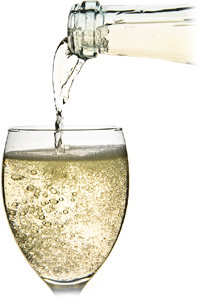 E.C.Kraus,
E.C.Kraus,
I have made some wine this year and my question is how to stop carbon dioxide from getting in the wine, And when it is in the wine how to get rid of it ?
Thank you
Dick H.
———-
Dear Dick H.
Carbon dioxide or CO2 gas is a natural byproduct of any fermentation. It’s the sparkle in a champagne. It’s the fizzy in a soda pop.
Once a fermentation has completed it is normal for CO2 to be saturated into the wine, but with the agitation involved in racking the wine, as per any homemade wine instructions, the wine should be mostly rid of the gas when it comes time to bottle.
As an added step you can also agitate the wine with a degassing paddle. It agitates the wine without splashing it or allowing air to get mixed into it. Air getting mixed into the wine at this stage would promote oxidation in the wine.
Another possibility is that the wine is fermenting in the bottles causing carbon dioxide to be created within each bottle. This can happen when the fermentation has not successfully completed before stopping. A gravity hydrometer should always be used to check that the wine has completed its fermentation before moving on to the next step.
Best Wishes,
Customer Service at E. C. Kraus
———————————————————————————————————
Ed Kraus is a 3rd generation home brewer/winemaker and has been an owner of E. C. Kraus since 1999. He has been helping individuals make better wine and beer for over 25 years.
Can I Seal My Wine Bottles Without Getting A Corker?
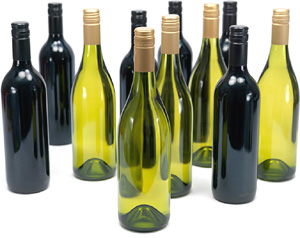 Hello,
Hello,
I made elderberry wine with elderberries I put in the freezer last year. I made juice out of them by cooking them in my steam juicer and followed your wine recipe on the website. I want to bottle the wine but do not have a corker. Do you have suggestions on how to stopper a wine bottle with out a corker?
Thank you for your help.
Becky
———-
Dear Becky,
You are correct in assuming that you need a corker to put in a regular wine cork stopper. The corker compresses the wine cork and plunges it into the wine bottle opening–something that can not be done by hand. The diameter of the cork you see when it come out of the wine bottle is much less than the diameter when it was forced in.
We do have some other options, as you are expecting. For example, we have push-in corks that you can push-in by hand. They are called mushroom corks. They have a smaller diameter than a full-size cork and have a black, plastic top for easy gripping. You could also go with screw cap bottles with screw caps, eliminating the stopper avenue all together.
We do not recommend using either of these methods of sealing the wine bottle if you are planning on aging the wine for longer periods of time, but if you plan on drinking the wine within 18 months these closures will work just fine.
Best Wishes,
Customer Service at E. C. Kraus
———————————————————————————————————
Ed Kraus is a 3rd generation home brewer/winemaker and has been an owner of E. C. Kraus since 1999. He has been helping individuals make better wine and beer for over 25 years.
How Much Air Should Be In My Wine Bottle?
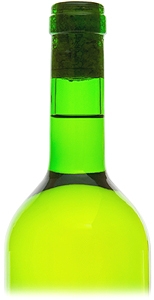 Good Morning,
Good Morning,
Thank you for the info in the newsletters they have been helpful.
I need to know how much air should be above the wine in the bottle. Could you let me know about that so I don’t over/under fill.
Dr. Thomas
———-
Dear Dr. Thomas,
I’m very glad to hear that you find our wine making newsletters informative and helpful. It is are sincerest goal to provide home winemakers with the tools they need to become successful, including information. Now, on to your question…
I am assuming you are referring to the amount of air-space that should exist between the wine and the wine cork stopper while in the wine bottle. When you are bottling your wine you want some head-space to promote proper aging, but you don’t want too much space, as this can contribute to oxidation of the wine.
Most winemakers agree that you would like about 3/4 inch between the wine and the cork stopper. If synthetic corks are being used, you can get away with a little more head-space in the wine bottle.
I hope this answers your question.
Best Wishes,
Customer Service at E. C. Kraus
———————————————————————————————————
Ed Kraus is a 3rd generation home brewer/winemaker and has been an owner of E. C. Kraus since 1999. He has been helping individuals make better wine and beer for over 25 years.
My Wine Tastes Terrible!
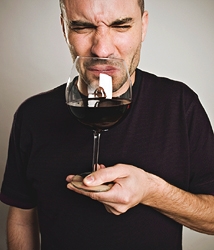 Howdy,
Howdy,
I am new at wine making and just learning how to make white wine with one of your wine ingredient kits. I am in the last stages and decided to take a small taste test even though I still have 2 or 3 days left in the last stage. It is terrible! Can the wine get better in that short period of time or is it to far gone and will not come out good? I followed the directions word for word.
I did find 1 difference in the articles and the directions given on the ingredients kit. Articles say not to put fermentation lock but the directions say to do so. I did and I am wondering if this is the reason for the result that I am experiencing.
Thank you,
Tom
———-
Dear Tom,
It is normal for the wine to taste disgustingly bitter at this stage of the process. Aging plays a very important and dramatic role in the development of the wine’s flavor and the rounding of rough edges, so to speak. The wine will experience incredible improvement over the next 30 to 60 days and then marginally so over the following few months.
One interesting thing you can do is to open a bottle of the wine every 30 days and take notes on your impression of the wine. In essence, make a diary of the wine. The more detailed the better.
At a certain point further down the road you will notice that the wine is no longer changing or improving. This may be at around a year’s time; it may be 18 months; it may be 9 months. Every wine is different.
A lot of factors come into play such as were natural corks or synthetic corks used to seal the wine bottles? Typically, natural cork will age the wine more quickly than synthetic corks. How much body does the wine have? Heavier bodied wines take longer to age the lighter boded wines, (Merlot vs. Riesling). These are just two examples of many.
Going back to your concerns, I would not hesitate to bottle this wine with great optimism. I see no reason to believe that it will turn out bad based on the information you have given.
Best Wishes,
Customer Service at E. C. Kraus
———————————————————————————————————
Ed Kraus is a 3rd generation home brewer/winemaker and has been an owner of E. C. Kraus since 1999. He has been helping individuals make better wine and beer for over 25 years.
Why Does My Wine Have To Sit So Long?
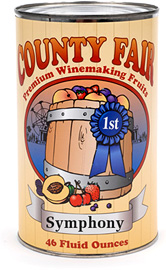 Hello Kraus,
Hello Kraus,
My neighbor is trying to show me how to make white wine using your County Fair Symphony concentrate. He told me that the wine will need to sit many months to age before it is ok to drink or bottle. I have read the homemade wine instructions on the side of the can and in the First Steps In Winemaking book that i got from you. I am still confused about why it has to sit so long before i can drink it.
Todd B.
———-
Dear Todd B.,
First, I would like to say that the Symphony grape makes an excellent wine. I’m sure you will be pleased with its outcome. Also, you are very lucky to have someone who can show you the ropes as it were, being a beginning wine maker and all.
Now, let me see if I can shed some light on the issue.
One of my favorite wine making tips is When In Doubt, Wait. What I mean to say by this is you can get into more trouble by rushing the wine making process along than you can by adding some extra time between the some steps.
Your friend has found through their own wine making experiences that you should wait several months before bottling. This is okay and will not hurt the wine in any way, and may potentially help the wine. But, it may not be necessary either, depending on the situation. Every wine is different in terms of aging need.
In my humble opinion in this situation, if the wine is bottled right after the fermentation has completed and the wine has had time to clear, it will be very drinkable at about 30 to 60 days. However, the wine should marginally improve on up until about 6 to 9 month.
What your friend may be doing (consciously or unconsciously) is trying to eliminate the temptation of drinking all the wine before it is at its best. If it’s stowed away for a few months before it’s bottled it will be out-of-mind and age just as well — if not better — while in bulk.
Best Wishes,
Customer Service at E. C. Kraus
———————————————————————————————————
Ed Kraus is a 3rd generation home brewer/winemaker and has been an owner of E. C. Kraus since 1999. He has been helping individuals make better wine and beer for over 25 years.
